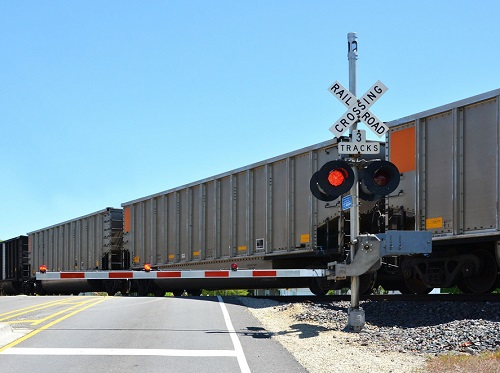The Pipeline and Hazardous Materials Safety Administration or PHMSA is proposing a new rule aimed at improving public safety and preventing environmental impacts by requiring railroads to always maintain — and update in real-time — accurate electronic information about hazardous material that can be quickly accessed by authorized emergency response personnel.
[Above photo by FRA]
The agency said railroads would also be required to proactively “push” that information to authorized local first response personnel as soon as the railroad is aware of an accident involving any hazmat cargo.
“On-demand access to key information about hazmat shipments coupled with proactive information sharing will enable first responders to better prepare for the risks present at the scene of an incident BEFORE they arrive on scene,” said PHMSA Deputy Administrator Tristan Brown in a statement.
PHMSA’s notice of proposed rulemaking or NPRM would require all railroads to generate, in hard copy and electronic versions, real-time train consist information for shipments containing hazardous materials. Required information would include the quantity and position of the shipment on the train, the shipment’s origin and destination, and a designated emergency point of contact at the railroad. Comments are due by August 28.
The proposal responds to congressional mandates in the Fixing America’s Surface Transportation or FAST Act, National Transportation Safety Board recommendations regarding electronic manifests for cargo-carrying trains, as well as lessons learned from firefighters responding to the February 2023 Norfolk Southern derailment in East Palestine, OH.
Consistent with the broad scope of the NTSB recommendation, PHMSA’s proposal goes beyond the FAST Act mandate that had been limited to Class 1 railroads and extends these new proposed requirements to all railroad classes and requires proactive notification to local first responders in the case of an accident or an incident involving a release or suspected release of a hazardous material.
“Firefighters are often first to show up at many emergencies, including train derailments and hazmat incident,” added Edward Kelly, general president of the International Association of Fire Fighters or IAFF.
“Accurate, up-to-date information about train contents is critical to keep first responders and the communities they serve safe,” he said. “The IAFF strongly supports [this] new rule that would give firefighters real-time data allowing for safer responses. We applaud the DOT for prioritizing fire fighter and public safety.”
PHMSA is also working with the Federal Railroad Administration on several additional actions to improve freight rail safety – including making over $25 million in funding available to help train first responders and strengthen safety programs and issuing safety advisories to railroad companies about replacing tank car covers and urging a faster transition from DOT-111s to DOT 117s rail cars.
 Nation
Nation
Registration Open for AASHTO’s Winter Rail Meeting
December 19, 2025 Nation
Nation

